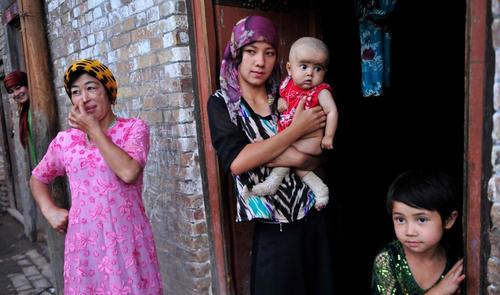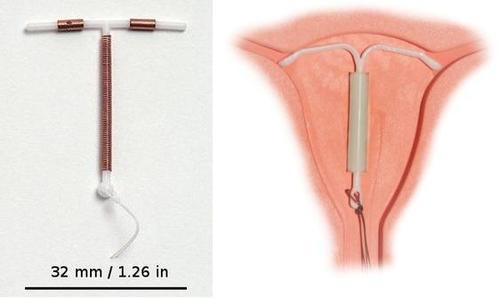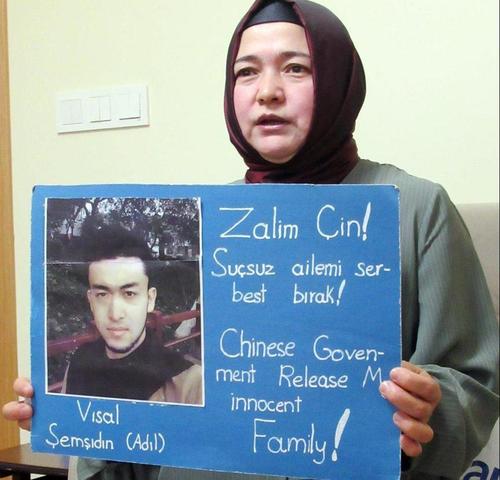By Tyler Durden
A gynecologist who left the autonomous region of Xinjiang, China in 2011 and is now living in exile, has revealed the inner-workings of Beijing’s forced-sterilization program of Uighur women, according to a recent interview by The Sankei Shimbun – Japan’s 5th largest newspaper (via Japan Forward).
The doctor, 47-year-old Gülgine, immigrated from China to Istanbul, Turkey in 2011. She previously worked as a gynecologist in the city of Urumqi – capital of the autonomous region, where she inserted intrauterine devices (IUDs) “into women’s wombs.”

“A lot of women were put on the back of a truck and sent to the hospital,” she said, adding “The [sterilization] procedure took about five minutes each, but the women were crying because they did not know what was happening to them.”
Gülgine herself carried out sterilizations at a hospital in Urumqi, capital of the autonomous region. Showing pictures of T-shaped and U-shaped intrauterine devices (IUDs), she explained that “these devices were inserted into women’s wombs.” –Japan Forward
According to a 2017 New York Times report which detailed China’s method of dealing with the country’s previous one-child policy, “IUDs used for Chinese women were meant to be left indefinitely, with surgery necessary to take them out.” China, meanwhile, has denied the forced sterilizations.

According to Gülgine, forced infertility probably began systematically in the autonomous region from around 1980. That was a year after China started birth restrictions under the “one child policy.”
“I understood the meaning of the surgery, but I later learned that it was a policy for the Uyghur,” she said, “and I too was sterilized.”
Other Uyghur women who fled to Istanbul because they couldn’t stand living in the autonomous region have sometimes gone to talk to Gülgine, complaining that they cannot have children. She has examined more than 150 so far, but many don’t know they have been sterilized, and some women start crying in anger when she explains what has happened to them.
If the IUD is left in the womb for a long time, it could adhere to the surrounding tissue, making it difficult to remove without breaking a bone. It could also cause infection and cancer, and some women have experienced mental health problems. –Japan Forward
As an aside, the MLB, Delta, Coca Cola, big tech, leading Democrats and other wokeists profiting from relationships in China have a bigger problem with Georgia requiring voter ID than the long-documented forced sterilization of ethnic minorities.
Hot of the press…the new 100 yuan bill! @NBA @KingJames @AmbCuiTiankai pic.twitter.com/wWMRmnoXrM
— ??Kyle Bass?? (@Jkylebass) October 17, 2019
According to Chinese government statistics, around 60,000 men and women were sterilized by either the binding of seminal ducts or fallopian tubes in 2014 – an increase of 14x over 2013, while “Procedures to implant IUDs were performed at a rate of 200,000 to 300,000 people each year.” By 2017, an estimated 3.12 million women had been fitted with an IUD – around 60% of women of childbearing age.

Another woman tells her story:
The Sankei Shimbun met another exiled Uighur woman living in Turkey, Calvinul Kamal, a 50-year-old housewife who was sterilized the day she gave birth to her third child in July, 2006, living in the Uyghur Autonomous Region city of Gurja. Due to China’s population control measures, Kamal’s third child was not allowed in urban areas of the Xinjiang autonomous region – so she pretended to be her older brother’s wife who only had one child. Following the birth, “she was made to sign a pledge in hospital that she would not have another child, and was sterilized.”
Kamal said she felt as though “this body is no longer mine.” She became depressed and felt ill for about two months. When she confessed to her mother about the sterilization, she discovered to her surprise that her mother, too, had been sterilized. Then she found that many of her friends had met the same fate.
For a while, her third child was raised by her brother and his wife. But after the uprising in Urumqi in 2009, the Chinese government temporarily relaxed the restrictions against third children as a special concession. Kamal bribed the officials, re-registered the child as her own, and took custody over him.
With the conviction that “we are not welcome in this country, and there is no future here,” Kamal and her husband escaped China in 2013 with their three children.
“Just because you come to Turkey doesn’t mean your worries have ended,” said Kamal. “Not a day goes by that I don’t think about my many relatives sent to the camps, and I can’t sleep at night.” –Japan Forward
Kamal is currently on a campaign to convince Chinese officials to free her nephew, who was “abruptly taken from his workplace in Urumqi in 2017” and is currently missing.





